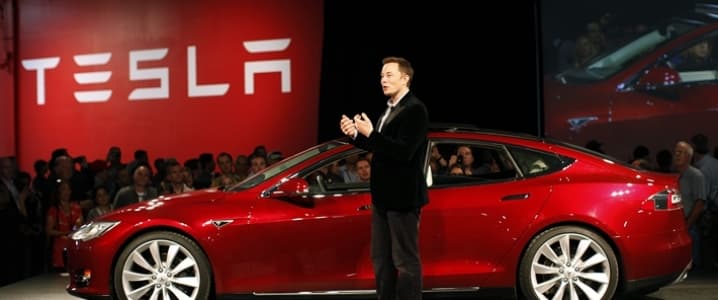Tesla’s increasingly ambitious plans to rule not only the electric vehicle space but also the solar energy space are likely to become more difficult to achieve over the next year. It has been widely reported in recent weeks that Tesla’s gigafactory is facing some challenges in becoming fully operational. What is perhaps less well understood is the magnitude of the supply chain challenges that will face Tesla and its gigafactory.
Tesla’s goal is to produce 500,000 vehicles a year by 2018. The company has accelerated its production time table in large part due to the enormous amount of demand the company saw for its Model 3 sedan. The firm announced almost 375,000 preorders for the vehicle. To fulfill this demand plus new demand that the company will likely see for its products over the next couple of years, Tesla needs to produce more lithium ion batteries in 2018 than the entire world produced in 2013. That’s not an impossible feat given the size of the gigafactory, but it is challenging.
In particular, while Tesla may have the facility to manufacture the batteries it needs, the company still requires enough metal to make all of those batteries. Nickel, cobalt, aluminum, and most of all lithium are all going to be needed in vast quantities for Tesla to meet its ambitious plans. And with the start of 2018 less 18 months away, that does not leave the firm much time to get all of its plans set in motion.
Tesla’s plans are also setting the company up as a competing customer against the likes of Apple and IBM which need lithium ion batteries for a host of other small electronic devices. To deal with the supply chain challenge, Tesla is taking page from Henry Ford’s playbook and attempting to vertically integrate its supply chain (hence the gigafactory).
To deal with its metal sourcing needs, Tesla is hiring supply chain specialists to help it cut deals with small miners around the world. The company has signed deals with Pure Energy Metals and Bancanora Metals among others. Pure Energy is exploring lithium deposits in Nevada while Bacanora Minerals is looking at developing lithium deposits in Sonora, Mexico.
Lithium supplies are likely to stay tight throughout 2016 with a deficit this year of 4,500 metric tons according to Macquarie Research, before balancing out in 2017 and 2018. That respite in demand shortages will be short lived though, with stratospheric demand in the later years of the decade leading to a shortage of 46,000 tons of lithium by 2021. Related: Why Oil Companies Must Look Beyond Oil To Survive
Nickel may be an even bigger problem though. Despite their name, lithium ion batteries are only about 2 percent lithium by mass, whereas nickel is a bigger cost contributor. Elon Musk called out the price of nickel as a primary driver of battery cell costs on an investor call in late May. Prices for nickel were as high as $21,000 per metric ton in 2014 before the Chinese economic slowdown became obvious. Nickel prices have fallen back since that time, but the current small surplus of nickel will likely turn to a deficit by the end of the decade causing yet more headaches for Musk and Tesla. While Tesla is wise to be planning for its future battery needs now, other firms are likely to be doing the same if only so they can keep up with the automaker’s exponentially increasing thirst.
To be clear, most firms would kill to face the problem Tesla has. While most companies have too little demand and suffer from sluggish sales, Tesla has exactly the opposite problem. The company can pretty much sell every car it can make at a premium price and a large profit. The problem is executing on making all of those cars. Tesla has been able to grow its production impressively in recent years, but going from production of around 50K cars to production of around 500K cars in the span of 3 years is going to be a tough feat indeed. Investors should stay tuned.
By Michael McDonald of Oilprice.com
More Top Reads From Oilprice.com:
- Was Lifting The Export Ban A Success?
- How Peak Oil Was Misunderstood
- IEA Sees Oil Demand Slowdown Harming Oil Price Rebound


















